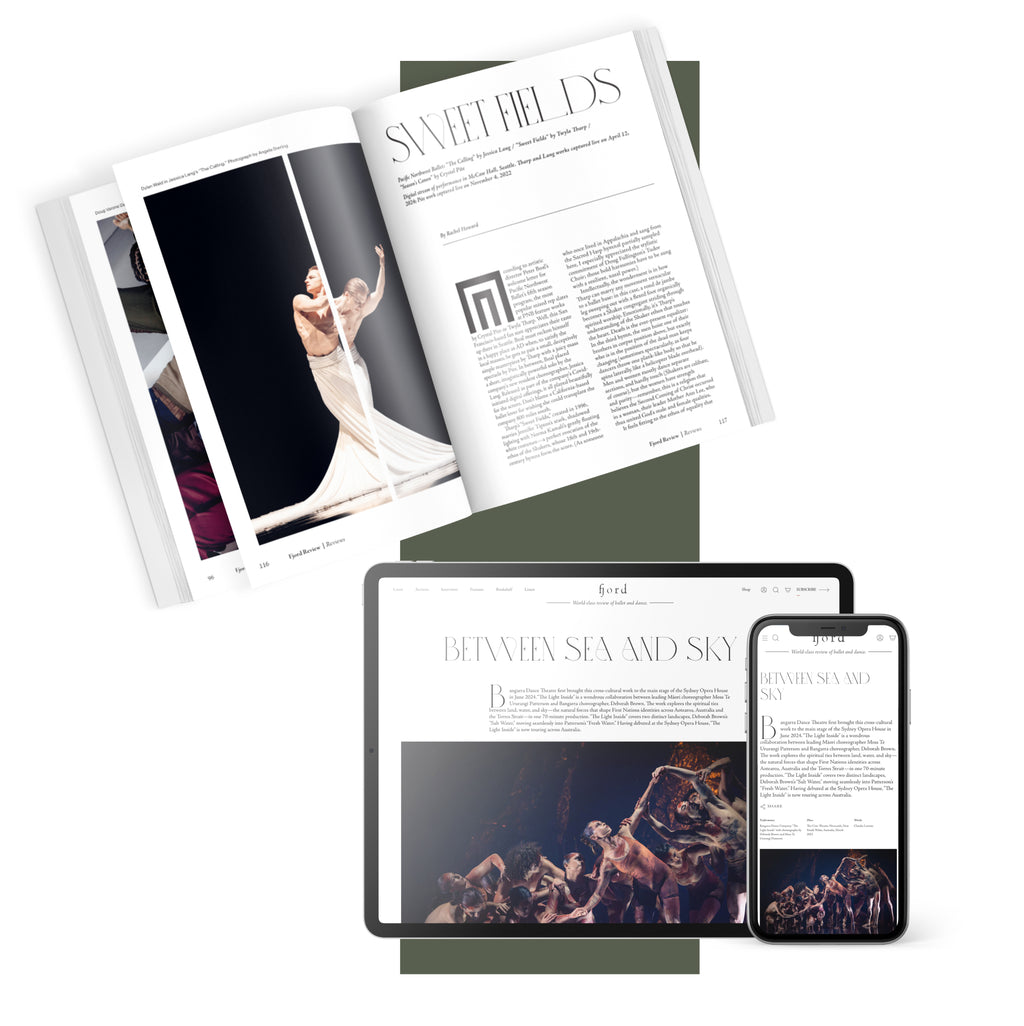Despite its melancholic sections, “Wartime Elegy” does not seem to be a dance of grief, nor one of despair: the folkdance sections make so that the audience and the dancers experience many moments of joy and laughter. Neither is it a dance exactly of hope: There is celebration in folk and cultural tradition, but it does not triumph over the somber sections. Instead, “Wartime Elegy” seems to be about holding on. The juxtaposing folk and somber sections couldn't be more different, but they share an important motif.
In the “black” sections, dancers latch on to each other as they travel across the stage, freezing into an ascending formation that looks like an image of evolution. A dancer on one end has fallen to the ground, but each following dancer rises a level up from the one next to them. The last dancer is standing.
In the folk dance, the men grab onto each other's arms. They create an effect of a large wheel, pulling each other down on one side and up on the other, making so that the connected dancers are constantly rising out of and sinking into the ground cyclically.
Both of these instances create very different emotional effects— the first is solemn, and the second is comical. Physically, however, they require the same action: holding on tight. In “Wartime Elegy,” the dancers of the National Ballet of Ukraine are just trying to hold on—both in joy and in misery— to tradition, to memory, to life, and to each other.












comments